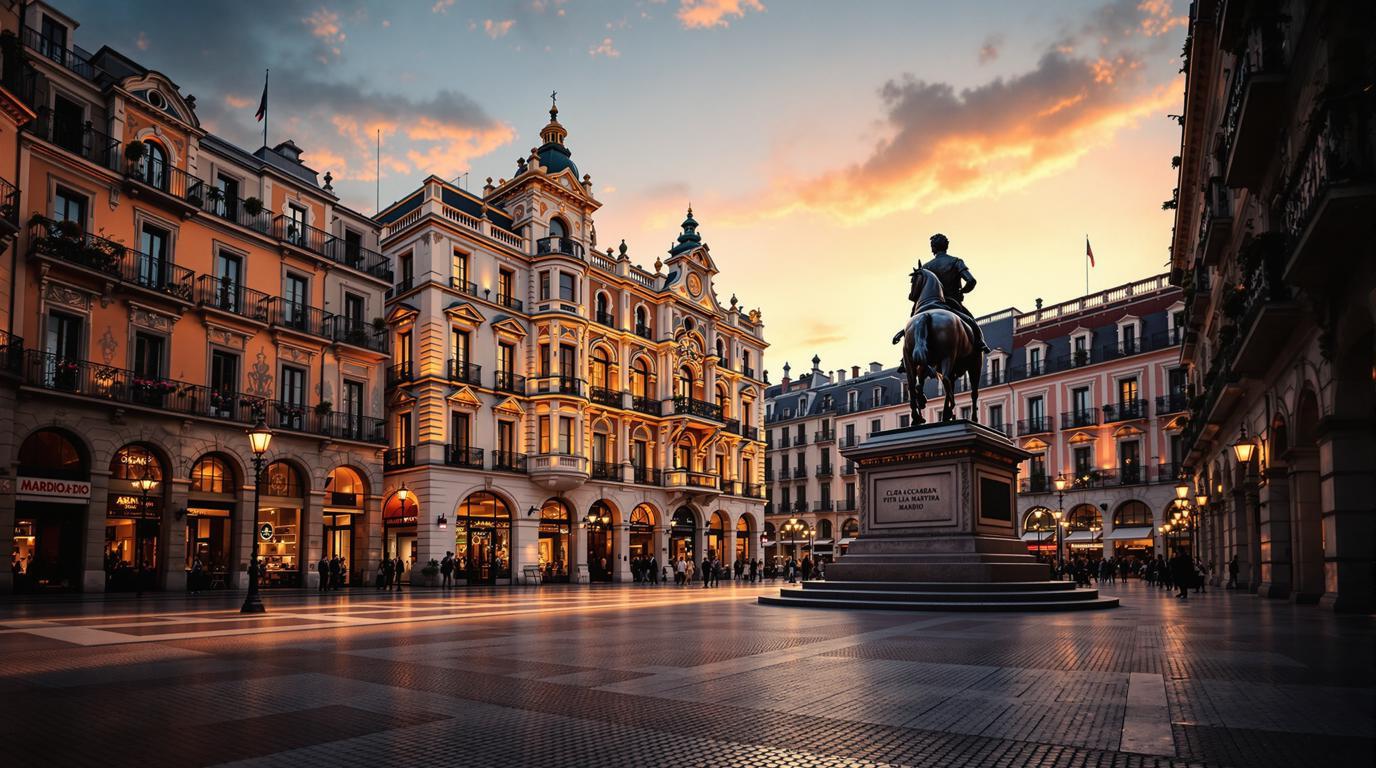Madrid’s Plaza Mayor hides a fascinating secret beneath its elegant arches – this grand 17th-century square once hosted bullfights, public executions, and royal ceremonies before transforming into the vibrant heart of Spain’s capital. While millions visit each year, few travelers realize they’re walking through one of Europe’s most perfectly preserved Renaissance squares, completed in 1620 during the reign of Philip III.
A royal vision carved in stone
The majestic rectangular plaza wasn’t always so symmetrical. Initially a chaotic marketplace outside city walls, King Philip III commissioned architect Juan Gómez de Mora to transform it into a harmonious royal square. The result? A meticulously designed space measuring 129 by 94 meters, enclosed by elegant three-story buildings with 237 balconies overlooking the central space.
“Plaza Mayor represents the golden age of Spanish architecture, a period when Madrid was asserting itself as one of Europe’s great capitals,” explains local historian Miguel Sánchez. “Every arch and balcony tells a story of Spain’s imperial ambitions.”
The building that survived nine fires
Casa de la Panadería, the bakery house with its stunning frescoed façade, stands as the plaza’s most iconic building despite suffering through nine devastating fires. The current mythological scenes painted in vivid blues and golds were added in 1992 by artist Carlos Franco, replacing centuries of earlier artwork destroyed by flames.
This resilient structure now hosts Madrid’s Tourism Center, where visitors can gather information before exploring nearby attractions like Barcelona’s architectural wonders or planning excursions to other Spanish treasures.
The square where time stands still
While most European plazas have modernized over centuries, Plaza Mayor maintains an almost eerie time-capsule quality. The bronze statue of Philip III on horseback, created in 1616 by Giambologna and Pietro Tacca, still commands the center as it has for over 400 years.
“When you sit beneath the arcades at dusk, sipping coffee as shadows lengthen across the cobblestones, it feels like stepping back into Spain’s Golden Age,” says María Alvarez, a lifelong Madrid resident. “The plaza breathes history.”
A sandwich worth crossing the Atlantic for
Food critics will tell you Madrid’s most authentic culinary experience isn’t found in Michelin-starred restaurants but in Plaza Mayor’s humble calamari sandwiches. These crispy squid rings tucked into crusty bread have become legendary among food travelers seeking authentic Spanish fare.
Though restaurant prices around the plaza run higher than elsewhere in Madrid, the experience of dining beneath the historic arcades rivals Italy’s most charming hidden gems for atmospheric dining.
Christmas magic that rivals Europe’s best
December transforms Plaza Mayor into Madrid’s most enchanting holiday destination. The annual Christmas Market dates back to 1860, filling the square with wooden stalls selling handcrafted nativity figures, festive decorations, and seasonal treats.
Unlike the more commercialized markets found across Europe’s art nouveau capitals, Plaza Mayor’s celebration maintains authentic Spanish traditions that connect visitors to centuries of holiday customs.
The photographer’s perfect frame
Early morning photographers capture the plaza’s most magical moments before crowds arrive. The golden Mediterranean light filters through archways, creating dramatic shadows across the distinctive red-ochre buildings. For the ultimate shot, position yourself at the northeast corner facing the Casa de la Panadería when morning sun illuminates its frescoes.
This photogenic quality rivals even Japan’s ancient capitals for architectural harmony and historical atmosphere.
Beyond the tourist route
While most visitors stick to the main square, savvy travelers explore the narrow medieval streets radiating from Plaza Mayor. Just steps away, Mercado de San Miguel offers Spain’s finest tapas under an iron-and-glass canopy, while Calle Cava Baja reveals taverns dating back centuries.
These hidden pockets of authentic Madrid culture rival even America’s most unusual landscapes for their capacity to surprise and delight curious explorers.
Plaza Mayor remains Madrid’s beating heart – not just a tourist attraction but a living museum where Spanish history unfolds beneath your feet. When evening falls and locals reclaim their square from daytime visitors, you’ll understand why Madrileños consider this not just a plaza, but their collective living room under the stars.
